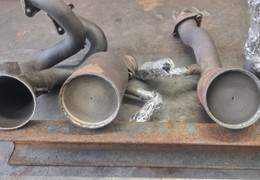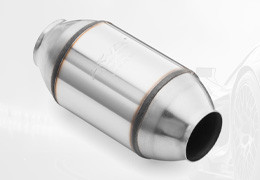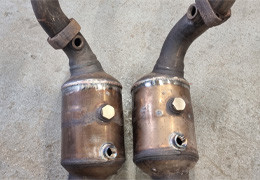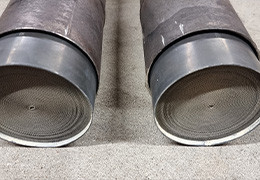-
Catalysts
addremove
- Universal catalysts
- Sports catalystsaddremove
- Reconditioned catalystsaddremove
- Alfa Romeoaddremove
- Aston Martinaddremove
- Audiaddremove
- Acuraaddremove
- BMWaddremove
- Chrysleraddremove
- Citroenaddremove
- Daciaaddremove
- Dodgeaddremove
- Fordaddremove
- Hondaaddremove
- Hyundaiaddremove
- Jaguaraddremove
- Jeepaddremove
- KIAaddremove
- Lamborghiniaddremove
- Huracanaddremove
- Land Roveraddremove
- Lexusaddremove
- MAN
- Mercedes-Benzaddremove
- Mazdaaddremove
- MINIaddremove
- Nissanaddremove
- Opeladdremove
- Peugeotaddremove
- Porscheaddremove
- Renaultaddremove
- Saabaddremove
- SEATaddremove
- Skodaaddremove
- Toyotaaddremove
- Volkswagenaddremove
- Volvoaddremove
- Original catalytic convertersaddremove
- Dedicated catalystsaddremove
- Used catalytic convertersaddremove
-
Catalysts
add remove Catalysts add remove
- Catalyst inserts addremove
- DPF Filters
- menu title addremove
-
Accessories
addremove
- Catalytic converter insert housings
- Exhaust cones
- Gadgets
- Exhaust dampers
- Probes and sensorsaddremove
- Lambda probesaddremove
- Temperature sensorsaddremove
- Exhaust gas pressure sensorsaddremove
- Crankshaft position sensorsaddremove
- Dampersaddremove
- Regeneration of catalysts
- Contact
- Blog
- Download
What is a catalyst?
Catalysts (another term: catalytic converter, reactor) perform extremely important functions in the exhaust systems of vehicles equipped with internal combustion engines. Although they are not items of equipment held in special esteem by drivers, it is worth realizing that in new designs adapted to the presence of a reactor in the system, its absence will certainly cause the opposite of the expected results. It will not improve performance, and may even cause negative legal consequences. However, let's start at the beginning.
- Catalytic converter - what is it and what is it used for?
- Catalytic converter insertion - ceramic or metal?
- Catalytic converter failure
- Catalytic converter replacement or repair?
The importance of the catalytic converter in the exhaust system
Catalytic converter ensures compliance with the requirements for certain emission standards. If the ecological aspect does not appeal to some people, let us add that compliance with the listed criteria is a sine qua non for driving a car within the European Union. In other words, after the eventual removal of the catalytic converter, trips to western Europe will only be possible using a bus, plane or train. Your own car will turn out to be useless, even the most fancy one.
How does a catalytic converter work?
A catalytic converter resembles a muffler. Inside the steel housing is a ceramic or metal insert and a protective mat. Not to be overlooked are the layers of precious metals that cover the inner cells of the cartridges, making catalysis possible, a chemical reaction that neutralizes harmful substances emitted with exhaust fumes. These metals (platinum, palladium or rhodium) are, unfortunately, the cause of interest in other people's catalytic converters by amateurs of easy profit.
The location of the catalytic converter in the exhaust manifold results in faster heating of the reactor, thus increasing its efficiency.
The lambda probe which is a component of the catalytic converter controls the level of oxygen in the exhaust gas, indirectly affecting the quality and quantity of the fuel mixture delivered.
In newer cars, the control function will be fulfilled by the OBD2 diagnostic connector with the OBDII system.
Which catalytic converter cartridge is better? Ceramic or metal?
Catalytic converters are durable devices, given the conditions in which they have to work. A mileage of 200,000 kilometers is not unheard of, although the performance of the catalytic converter deteriorates with the passing kilometers.
Catalytic converters ceramic show less durability due to faster core wear. This is especially evident in cars with LPG installation installed.
Much more resistant is the metal converter. Catalyzers of this type show less sensitivity to high temperatures and sudden changes in their height.
Add that the capacity of the device determines its application. The standard is 500-600 cpsi, while lovers of high-performance driving should be interested in catalytic converters with a throughput of 100-200 cpsi (number of cells per square inch).
Catalytic converter - symptoms of failure
Very often the symptoms of catalytic converter damage escape the attention of drivers, especially those who prefer a steady driving style. Only a thorough technical inspection or annual diagnostic tests make it possible to notice that there is something wrong with the catalytic converter.
Symptoms of a defective catalytic converter:
- Lower engine power;
- Unusual noises coming from the chassis (rattling, ringing);
- Signalization of the "check engine" light at higher speeds. Over time, the intensity of the light increases, even when driving quietly and slowly;
- In most cases, there is a noticeable increase in fuel consumption.
What causes catalytic converter failure?
We will not be revealing by stating that the most common cause of catalytic converter failure is wear and tear. Recall that driven 180 - 200 thousand kilometers is the peak of the device's capabilities.
Another cause of converter failure is faults within the ignition system. In this case, combustion of the fuel mixture takes place inside the catalytic converter and not in the cylinder.
There are also causes of catalytic converter failure on which the driver has little or no influence.
Firing the engine against its will must negatively affect the condition of the reactor. A push or pull will cause fuel to leak into the catalytic converter, where ignition and a sudden rise in temperature will occur.
Mechanical or thermal damage refers to the situation when a vehicle drives into a high curb, root or stone. A strong impact usually destroys the catalytic converter housing.
A similar effect will be caused by bathing the chassis in a hole filled with water. A heated reactor may not survive this test. Rapid cooling will cause the catalytic converter housing to shrink, resulting in compression and cracking of the cartridge.
Catalytic converter - repair or replace?
Let's consider. Catalytic converter usually retains its efficiency for the entire period, limited by the limit of kilometers driven. After that time, it must be replaced anyway, so repairing a worn-out device simply doesn't make sense. In a similar situation will be drivers wishing to change the performance of their car to a sports car. There is no question of reworking the catalytic converter, it is necessary to purchase a new one that exhibits the characteristics of a sports car.
But before this happens, it is worthwhile to seek free advice from a specialist. For this purpose, a contact form is provided, in which you can specify the make and model of your car and your expectations regarding the features of a new catalytic converter. While waiting for a response, we browse through available offers from Kateko, maybe we'll find something more?
Easy, right? Write today, in a few days you will enjoy a new catalytic converter chosen according to your preferences. And again, peace of mind for the next 200,000 kilometers.
.
Posted in:
News











Latest comments